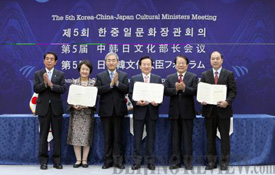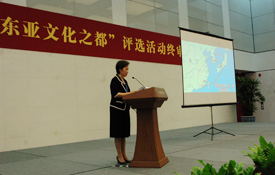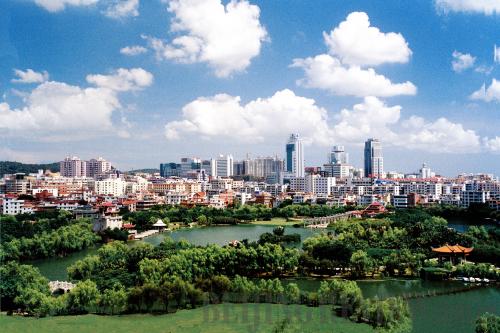|
 |
 |
|
TIME TO REMEMBER: China's Minister of Culture Cai Wu (second right) bestows the honor of Culture City of East Asia to Chen Qingzong (first right), head of the publicity department of Quanzhou Municipal Government, in Kwangju, South Korea, on September 28 (CHEN YINGJIE) |
PROMOTION: Huang Shaoping, Secretary of CPC Quanzhou Municipal Committee, makes an introduction during a Culture City of East Asia 2014 meeting (ZHENG WEN) |
Quanzhou also served as part of the famous maritime Silk Road, recognized by UNESCO as its official starting point. Along the route, Chinese ships reached the east coast of Africa and western Arabia during medieval times. During the Song Dynasty, Quanzhou was hailed as the largest port in the East, enjoying equal honors with Egypt's Alexandria.
Booming trade resulted in a flourishing local culture, which helped the city win its prestigious award.
Various cultures and religions have left their footprints in Quanzhou, including a Buddhist temple, an Islamic mosque and a Catholic Church, as well as a local ancestral temple to the goddess Matsu. Today, there are over 200 cultural heritage sites in the city, including 31 national-level protected areas.
 |
|
PICTURE PERFECT: A bird's eye view of Quanzhou City (WU SHOUMIN) |
Currently, four local elements are also inscribed on the UNESCO Intangible Cultural Heritage List. These include a strategy for training future Fujian puppetry practitioners (2012), Watertight-bulkhead technology on Chinese junks (2010), Chinese traditional architectural craftsmanship for timber-framed structures (2009), and Nanyin (2009).
The city has established a four-tier system for better protecting its intangible culture heritage. Currently, Quanzhou has a total of 565 intangible cultural heritage areas of focus. The city has built an exhibition center and 10 museums for these, and identified 420 new inheritors.
Huang said that, in a bid to promote cultural prosperity and international exchange, Quanzhou will organize a series of cultural events, including art performances, exhibitions and academic seminars during 2014. The city plans to invest 900 million yuan ($147.7 million) in building a number of public service facilities, including a national demonstration area for public culture and a new city library next year, ensuring citizens enjoy cultural experiences more easily.
Email us at: baishi@bjreview.com |
